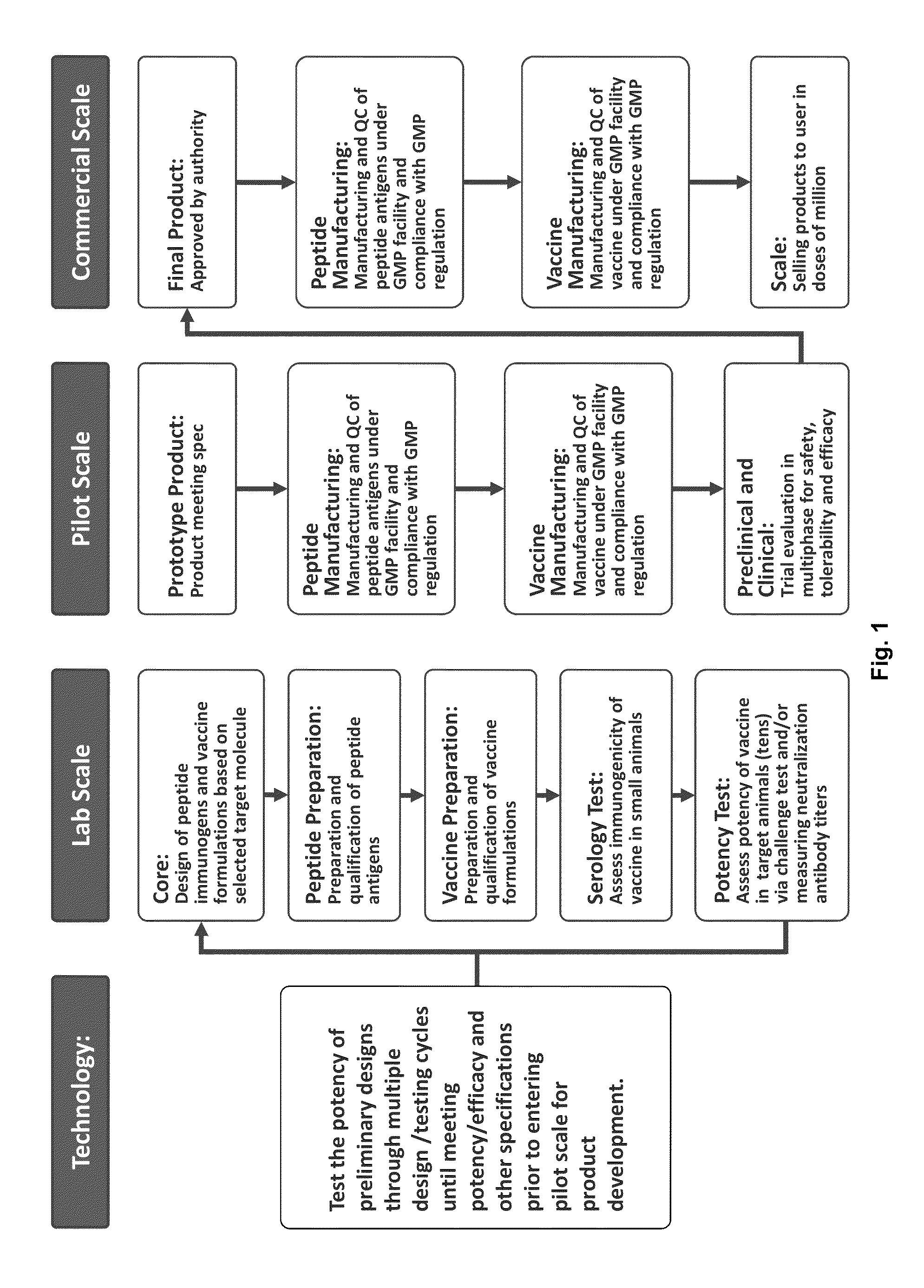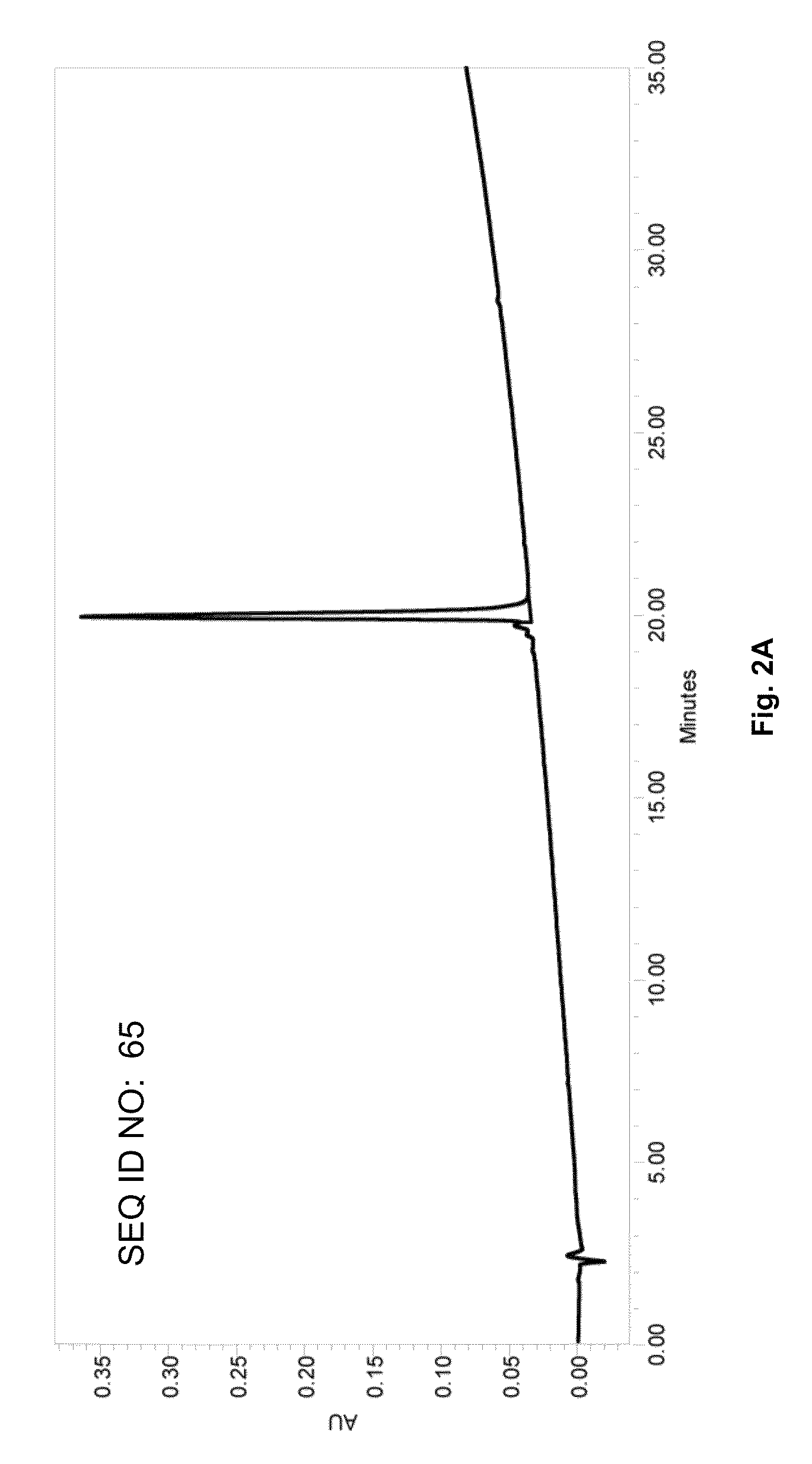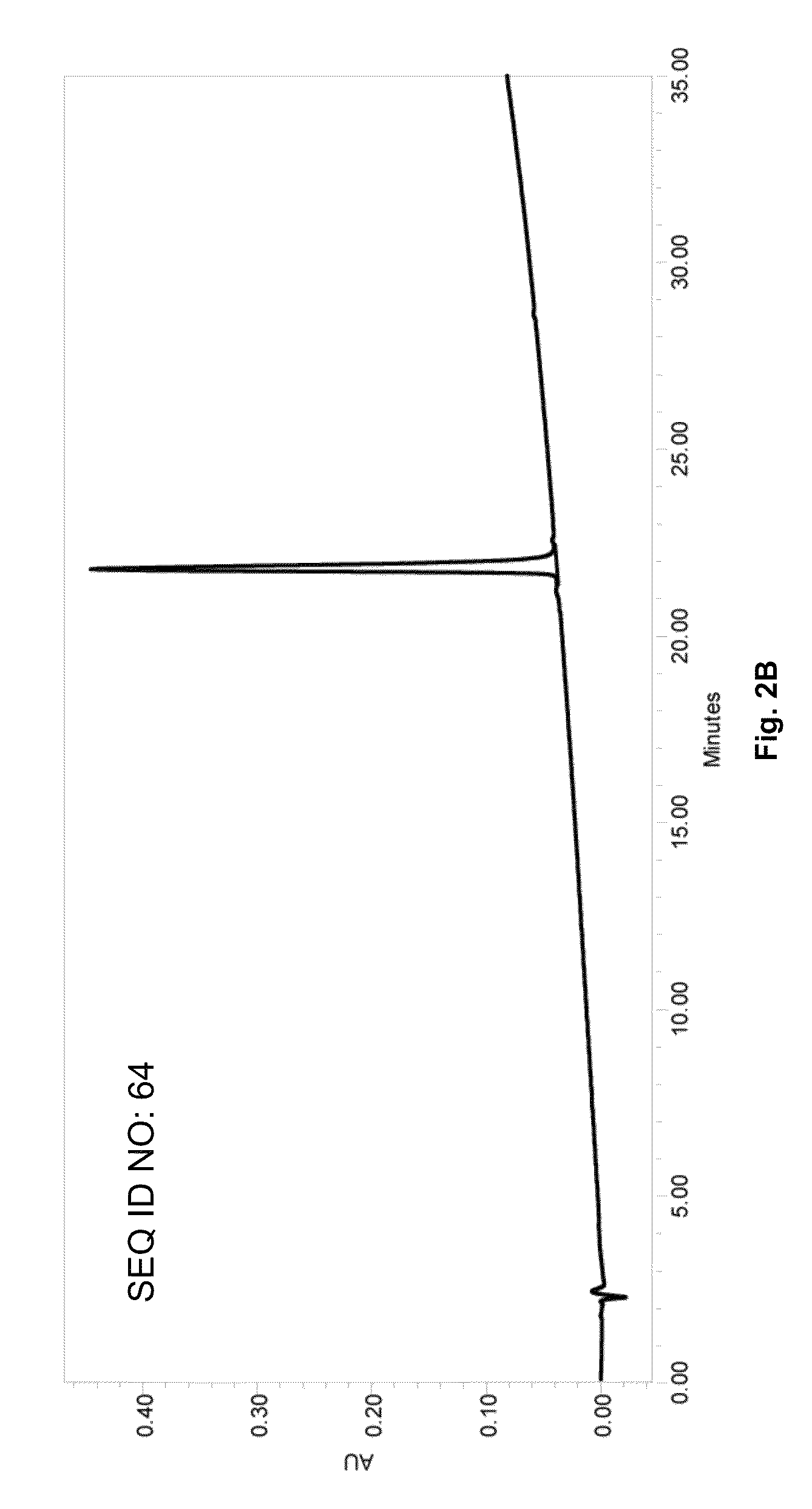Peptide vaccine for prevention and immunotherapy of dementia of the Alzheimer's type
a technology of alzheimer's type and peptides, applied in the field of peptide-based vaccines, can solve the problems of loss of synaptic function, no definitive treatment or cure for this devastating disease, and loss of tau pathology in mice expressing multiple transgenes, and achieve the effect of low cos
- Summary
- Abstract
- Description
- Claims
- Application Information
AI Technical Summary
Benefits of technology
Problems solved by technology
Method used
Image
Examples
example 1
Synthesis of Amyloid Beta (Aβ) Related Peptides
[0294]Methods for synthesizing designer Aβ related peptide constructs that were included in the development effort for an efficacious targeting Aβ vaccine design and formulation are described. The peptides can be synthesized in small-scale amounts, which are useful for laboratory pilot and field studies, as well as large-scale (kilogram) amounts, which are useful for industrial commercial production of vaccine formulations and serological assays.
[0295]A large repertoire of Aβ related antigenic peptides having sequences with lengths from approximately 10 to 40 amino acids were designed for the screening and selection of the most optimal peptide constructs for use in an efficacious AD vaccine. Representative Aβ1-40, Aβ1-42 peptides, N-terminus Aβ peptide fragments Aβ1-28, Aβ1-14, Aβ1-10, Aβ15-42 and 10-mer peptide employed for epitope mapping in various serological assays are identified in Table 1 (SEQ ID NOs: 1 to 32). Each construct con...
example 2
Serological Assays and Reagents
[0299]Serological assays and reagents for evaluating functional immunogenicity of the synthetic peptide constructs and formulations thereof are described in details below.
[0300]a. Aβ1-42, Aβ1-40, Aβ1-28, or Aβ1-14 Peptide-Based ELISA Tests for Antibody Specificity Analysis
[0301]ELISA assays for evaluating immune serum samples described in the following Examples were developed and described below.
[0302]The wells of 96-well plates were coated individually for 1 hour at 37° C. with 100 μL of target peptide Aβ1-42, Aβ1-40, Aβ1-28, or Aβ1-14 (SEQ ID NOs: 1 to 4), at 2 μg / mL (unless noted otherwise), in 10 mM NaHCO3 buffer, pH 9.5 (unless noted otherwise).
[0303]The peptide-coated wells were incubated with 250 μL of 3% by weight of gelatin in PBS in 37° C. for 1 hour to block non-specific protein binding sites, followed by three washes with PBS containing 0.05% by volume of TWEEN® 20 and dried. Sera to be analyzed were diluted 1:20 (unless noted otherwise) wi...
example 3
Immunohistochemical Analysis
[0313]Normal adult human tissues (PhenoPath Laboratories Inc., Seattle, Wash., USA) and brain specimens from cases with Alzheimer's disease (Dr. Felicia Gaskin, University of Virginia, Charlottesville, Va., USA) were obtained from postmortem and / or surgical pathology specimens. Cynomolgus macaque tissue specimens (Beijing Jo-Inn New Drug Research Center, Beijing, China) and hAPP transgenic mouse brain specimens (JSW-Research GmbH, Graz, Austria) were obtained at necropsy. Tissues were either snap-frozen in liquid nitrogen, submerged in cold OCT embedding compound and cryo-sectioned or they were formalin-fixed, paraffin-embedded and sections prepared by standard procedures.
[0314]Indirect immunofluorescence analysis of cryopreserved tissue sections were performed with preimmune and hyperimmune serum or purified IgG from guinea pigs, hAPP transgenic mice, baboons and macaques or with commercially available murine monoclonal antibodies and fluorochrome-conjug...
PUM
| Property | Measurement | Unit |
|---|---|---|
| weight | aaaaa | aaaaa |
| size | aaaaa | aaaaa |
| pH | aaaaa | aaaaa |
Abstract
Description
Claims
Application Information
 Login to View More
Login to View More - R&D
- Intellectual Property
- Life Sciences
- Materials
- Tech Scout
- Unparalleled Data Quality
- Higher Quality Content
- 60% Fewer Hallucinations
Browse by: Latest US Patents, China's latest patents, Technical Efficacy Thesaurus, Application Domain, Technology Topic, Popular Technical Reports.
© 2025 PatSnap. All rights reserved.Legal|Privacy policy|Modern Slavery Act Transparency Statement|Sitemap|About US| Contact US: help@patsnap.com



